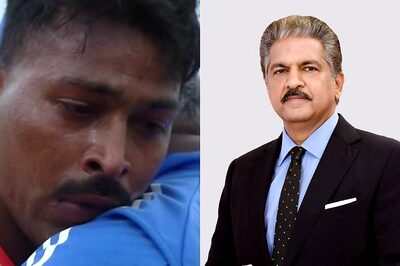
views
"Everything is lovely here at the Nacional and the only thing lacking is you dear if you could only see the view from my room looking out over the beautiful gulf stream and Oh those daiquiris that nobody makes like old Constantino."
The legendary storyteller Ernest Hemingway concluded the letter to his wife with a sweet remembrance of a drink that nourished him every morning.
It was in 1932 that Hemingway settled at Ambos Mundos hotel on number 153 of Obispo Street, Havana. His mission: he wanted to write one of his stories. Those final brush strokes.
Hemingway used to wake up early in the morning. Before it got too hot for him to continue pressing the keys of his typewriter, he would go out for his daily stroll. The sun-dappled streets refreshed him. If he was not standing at the Havana Harbor, where his boat Pilar was docked, looking at the blue waters, you could catch him ambling through the serpentine streets in Old Havana.
10 minutes of such a walk one morning from his room, Hemingway stood at the entrance of a bar, nondescript by appearance, wondering what to do. The wall bore a plank that said, 'El Floridita.'
Those days Cuba and other Latin American countries were a relief for thousands of thirsty US citizens who were reeling under the pressures of prohibition. If they wanted a good drink, they'd have to cross the borders and come deep down to places like Havana, where spirits overflowed in plenty.
Along with the Americans, came a craving for cocktails. Local bars experimented with new drinks; they built concoctions out from fancy ingredients. Creativity was suddenly in huge demand in local bars.
'El Floridita,' though its lineage goes back to the early decades of 19th century, became popular in the aftermath of US prohibition. The two Catalan brothers - the Sala Pareras - who opened the bar took a wise decision to invite expert Cantinero, Constante Ribalaigua from a village. The rest is history.
Constante bought the bar and made a legend out of it with the scintillating cocktails that he made. The star was the drink named diaquiri.
That morning Hemingway was standing outside the very bar that Constante owned. El Floridita. Once he went in, the great novelist couldn't resist noticing the old world charm of the bar. And what are they bragging about? Their drink? Hemingway looked around and found that most of the patrons were ordering and sipping a particular cocktail. He asked its name. Daiquiri. Could he have one, he asked again, this time at the counter. Hemingway took a sip and asked a smiling Constante: "That's good but I prefer it without sugar and double rum".
Constantine complied and served the next drink with double the rum, minus the sugar. "There it is Papa". That is the story behind the birth of the legendary cocktail - Papa Doble, the Hemingway Daiquiri. Constante later added grapefruit juice to the phenomenal cocktail for which thousands came to old Havana. They wanted to know what piqued the spirits of the writer they all loved.
Today if you visit the bar, you'd be welcomed by the bronze statue of Ernest Hemingway at one corner, sitting on his favourite chair, now cordoned off with chain.
Hemingway, once he became an ardent fan of La Floridita and its signature drink, came every morning at 10, went to his corner with Daiquiri and a newspaper and sat there for hours. He was keen to invite his friends from all over the world to his favourite place. Ava Gardner, John Wayne, Sartre, Tennessee Williams, they all shared his jubilant mood in the bar.
It was at El Floriditi that Spencer Tracy convinced Hemingway that he would play the part of Santiago from 'The Old Man and the Sea.'
“Do not think about sin, he thought. There are enough problems now without sin. Also I have no understanding of it.” Santiago told the boy (from The Old Man and the Sea).
















Comments
0 comment